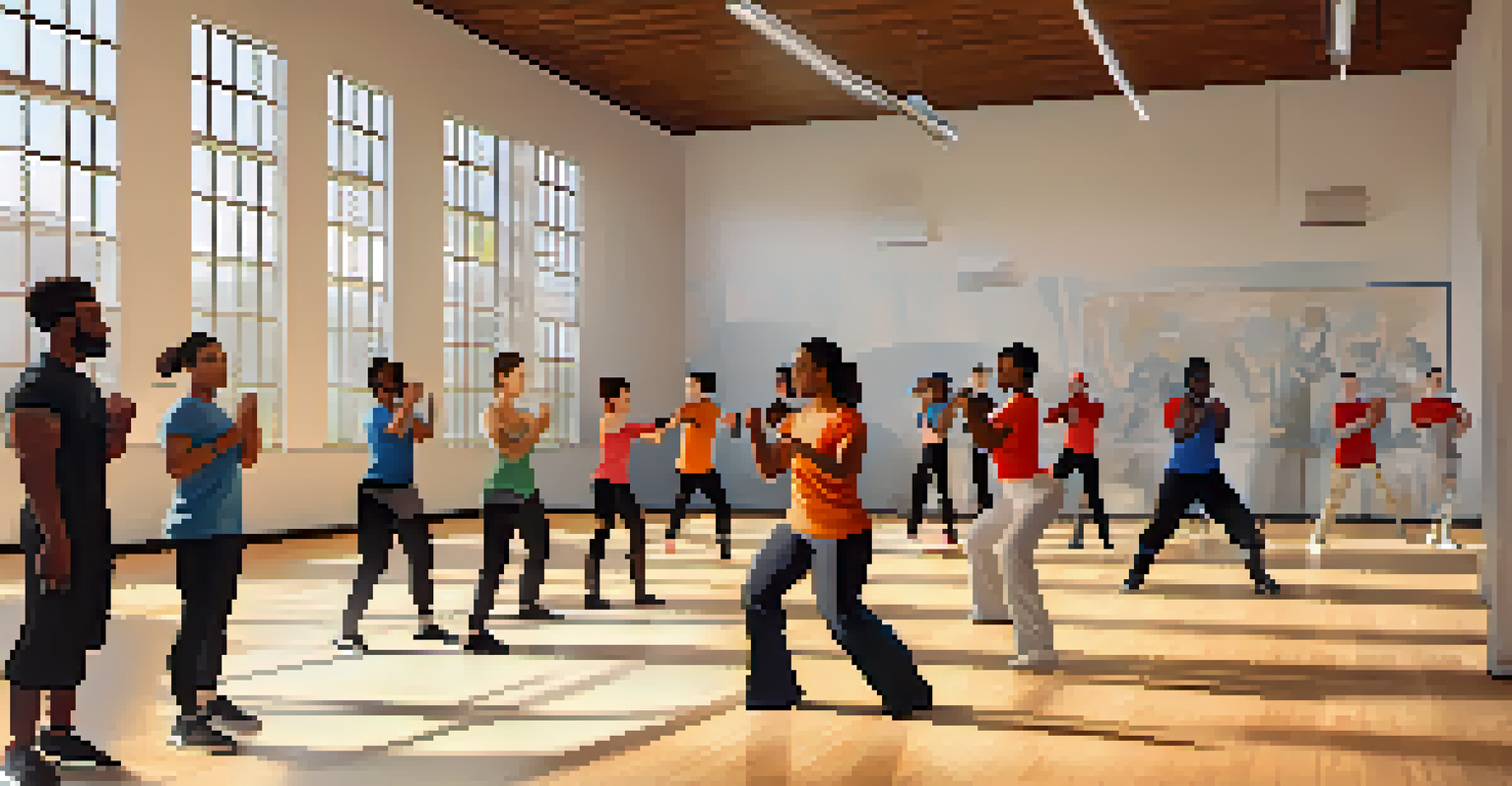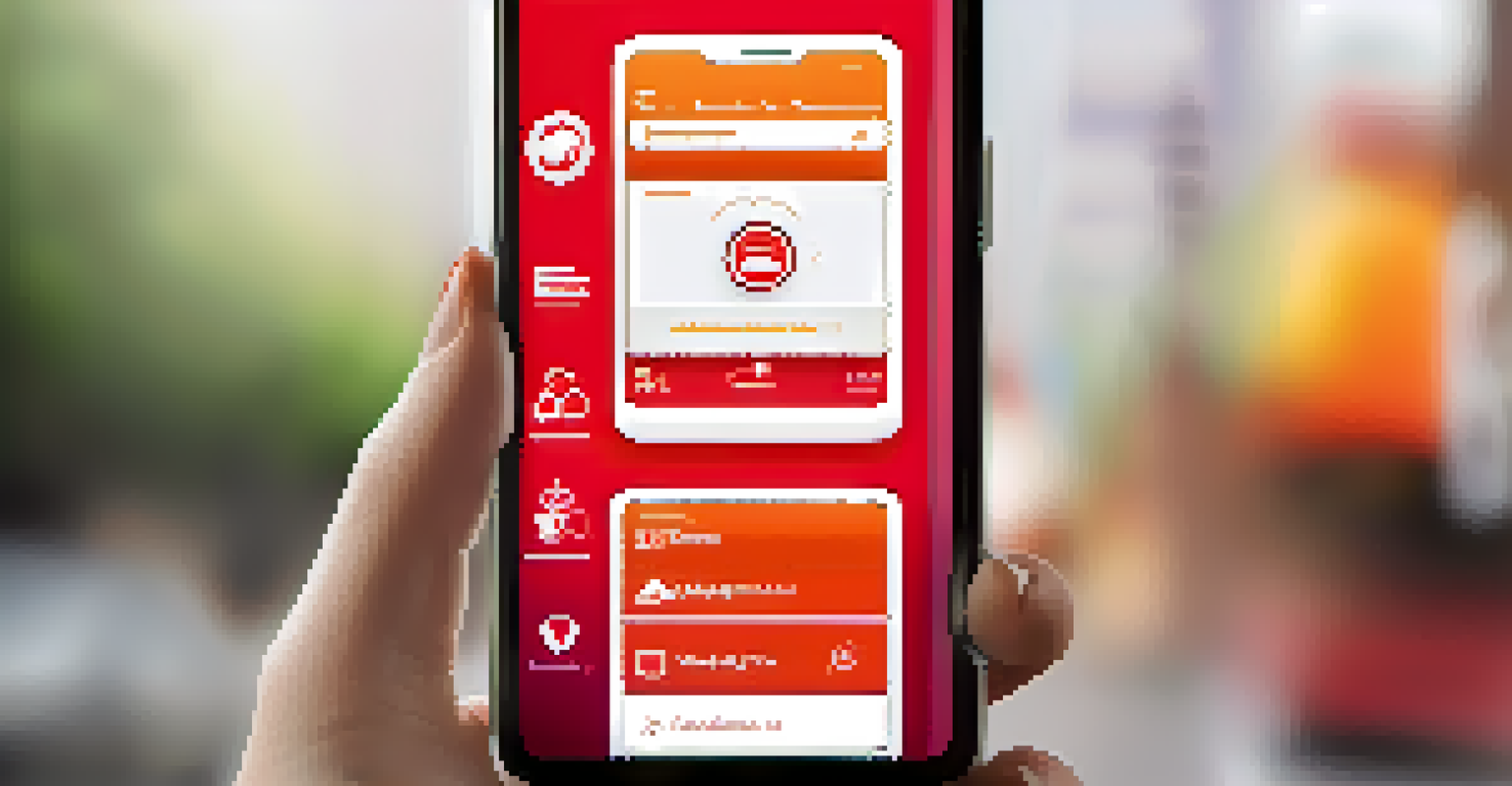Cognitive Disabilities: Simplified Self Defense Strategies

Understanding Cognitive Disabilities and Their Impact
Cognitive disabilities can affect how individuals process information, make decisions, and respond to situations. This can pose challenges in various aspects of life, including personal safety. By understanding these challenges, we can better tailor self-defense strategies to meet unique needs.
The greatest weapon against stress is our ability to choose one thought over another.
For instance, someone with a cognitive disability might find it difficult to recognize threatening situations or may struggle with remembering complicated instructions. It's crucial to acknowledge that these challenges are not insurmountable; with the right approach, self-defense can be accessible and effective.
Ultimately, the goal is to empower individuals with cognitive disabilities, equipping them with simple yet effective strategies that enhance their confidence and safety in everyday situations.
Developing Awareness of Surroundings
One of the first steps in self-defense is being aware of your surroundings. This means paying attention to people, places, and activities happening around you. For individuals with cognitive disabilities, practicing situational awareness can be simplified through specific exercises and routines.

For example, creating a personal checklist of things to observe—like exits, groups of people, or unusual behavior—can help enhance awareness. Visual aids, such as diagrams or pictures, can serve as helpful reminders for those who benefit from visual learning.
Empowering Through Self-Defense
Teaching individuals with cognitive disabilities simple self-defense strategies enhances their confidence and safety.
By incorporating these strategies, individuals can develop a more intuitive sense of their environment, making it easier to recognize potential threats and respond appropriately.
Using Simple Verbal Strategies for Defense
When faced with a potentially dangerous situation, knowing how to communicate effectively can be a powerful tool. Simple verbal strategies, such as using clear and direct language to assert oneself, can help defuse situations. Phrases like 'I need help' or 'Leave me alone' can be effective in establishing boundaries.
Empowerment is about making choices, taking risks, and trusting your instincts.
Role-playing different scenarios with a trusted friend or family member can also bolster confidence. Practicing these phrases in a safe environment allows individuals to feel more prepared and less anxious when they need to use them in real life.
By mastering these verbal tools, individuals can enhance their self-defense capabilities without needing complex techniques, making it accessible for everyone.
Physical Self-Defense Techniques Made Simple
While physical self-defense can sound intimidating, there are simple techniques that anyone can learn. Focus on basic moves like pushing away an aggressor or using your body weight to create distance. These techniques don’t require extensive training but can significantly enhance personal safety.
For example, a straightforward technique like the 'palm heel strike' can be effective in creating space between oneself and a potential attacker. Practicing these moves in a safe environment helps reinforce muscle memory, making them easier to execute under stress.
Building a Support Network
Establishing a safety support network with friends and family fosters security and encourages open communication about safety.
Ultimately, the goal is to build confidence and ensure that individuals feel capable of defending themselves without overwhelming them with complex martial arts techniques.
Establishing a Safety Support Network
Having a support network is essential for anyone, especially individuals with cognitive disabilities. Friends, family, and community members can create a safety net that provides assistance and reassurance. Encourage open communication about safety concerns and strategies.
Regular check-ins with trusted individuals can help reinforce awareness and create a sense of security. This support can also extend to group outings, where individuals can look out for one another and practice safety strategies together.
By fostering a strong support network, individuals can feel more empowered and less isolated, knowing they have allies who understand their needs and challenges.
Utilizing Technology for Personal Safety
In our digital age, technology can play a significant role in personal safety. Simple tools, like emergency apps or location-sharing features, can provide an added layer of security for individuals with cognitive disabilities. These technologies can alert trusted contacts in case of an emergency or help locate someone if they feel lost.
For instance, wearable devices with SOS features can allow individuals to send alerts quickly, even if they cannot articulate their needs verbally. Familiarizing oneself with these tools can make them more effective when needed.
Utilizing Technology for Safety
Leveraging technology, such as emergency apps and wearable devices, can provide individuals with cognitive disabilities additional layers of personal safety.
By embracing technology, individuals can enhance their self-defense toolkit, making it easier to stay safe in a world that can sometimes feel overwhelming.
Practicing Self-Defense Regularly
Like any skill, self-defense requires regular practice to maintain confidence and effectiveness. Setting aside time each week to review strategies—whether through role-playing, physical techniques, or discussing scenarios—can reinforce learning. This routine helps individuals feel more comfortable and prepared when faced with real-life situations.
Consider joining local classes or community programs tailored to individuals with cognitive disabilities. These safe environments allow for guided practice and provide encouragement from peers who understand similar challenges.

By incorporating self-defense practice into everyday life, individuals can foster a sense of empowerment and readiness, making safety an integral part of their routine.
Empowering Individuals Through Education and Awareness
Education plays a crucial role in empowerment, especially when it comes to self-defense. By providing individuals with cognitive disabilities the knowledge and skills they need, we can help them navigate the world more confidently. Workshops, seminars, and resources tailored to their needs can make a big difference.
It’s also essential to educate the community about the unique challenges faced by individuals with cognitive disabilities. Raising awareness can foster empathy and understanding, helping to create safer environments for everyone.
Ultimately, empowering individuals through education and awareness can lead to a society that values and supports the safety and well-being of all its members, regardless of their abilities.